In Hungary, the act of drinking goes beyond the simple ingestion of alcohol: it is an expression of identity, a vehicle of hospitality and a tradition deeply rooted in everyday life. From family celebrations to informal conversations among friends, there is always a toast to be made and a story to be told. Traditional Hungarian spirits reflect centuries of history, terroir and creativity, and are an integral part of the country’s character. This liquid tour invites you to discover some of the most representative jewels of Hungarian culture: distillates with character, spirits with soul and wines with legend. More than a guide to what to drink, it is an invitation to understand how and why people drink in Hungary.
Pálinka: The Distilled Fruity Essence of Hungary
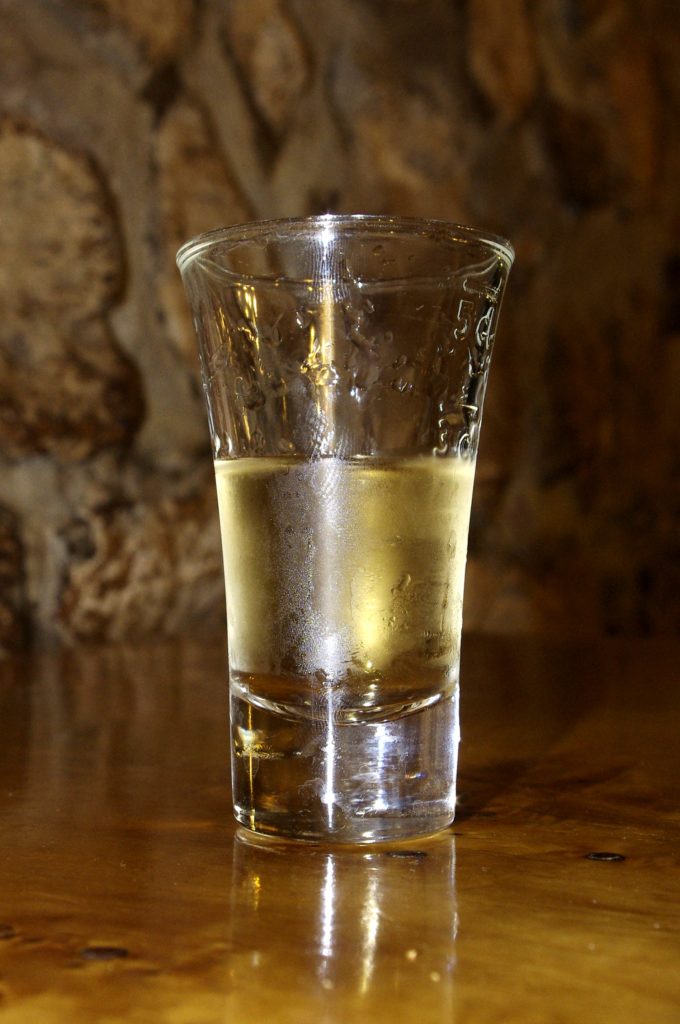
Pálinka occupies a place of honour at the heart of Hungarian culture and gastronomy, being considered a ‘Hungarikum’, a unique product of the country. This designation is no coincidence, as Pálinka enjoys a protection of origin which stipulates that it must be made in Hungary from fruit grown within its borders, with a minimum alcohol content of 37.5%. Since 2002, European Union legislation has also protected this tradition, placing specific restrictions on the fruits that can be used in its production. Given its potency, it is not uncommon to hear it referred to as ‘firewater’, a friendly warning to those trying it for the first time. This regulation and the appellation reflect the national importance of Pálinka and the intensity of the experience it offers.
Production process:
The production of pálinka begins with the selection of fruit, such as plums, apricots, cherries or pears. The fruit is crushed and fermented for 10-15 days at a low temperature. If the fruit has stones, they are removed before fermentation.
The distillate is then double distilled in copper stills (kisüsti), and in some cases the distillate is aged in casks. Traditionally, fermentation was carried out in refrigerated vessels to maintain temperature control.
Types:
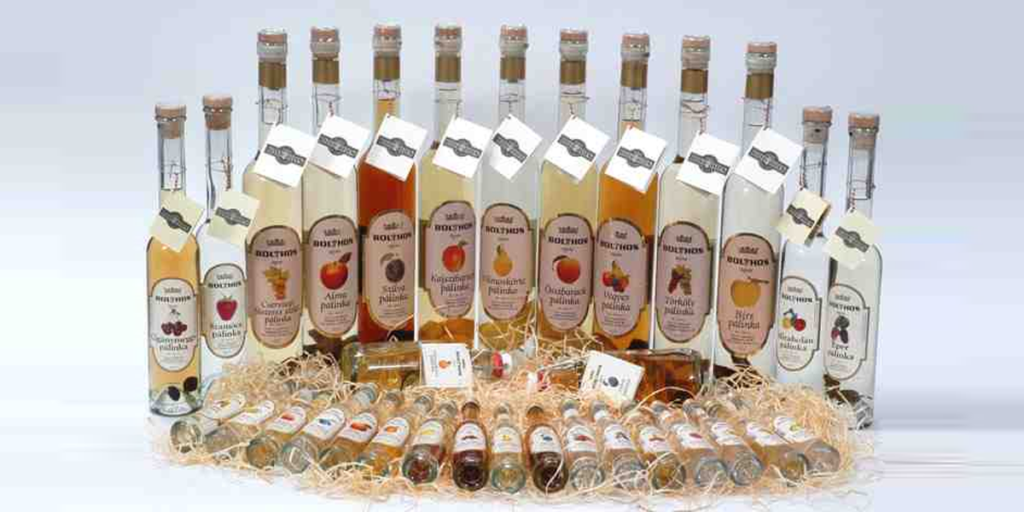
- Szilvapálinka: The most popular variety, known for its mild sweetness and distinctive aroma.
- Szatmári szilvapálinka: A regional plum pálinka from Szatmár, highly regarded for its quality.
- Gönci barack: Apricot pálinka from the Gönc region, highly valued.
- Kecskeméti barackpálinka: Apricot brandy produced in Kecskemét, famous across Hungary.
- Zwack Vilmoskörte: Williams pear brandy made by the Zwack brand.
- Törkölypálinka: Pálinka made from grape pomace, the leftover material after wine production.
- Birsalmapálinka: Quince pálinka, considered a hidden gem.
- Ágyas pálinka: Pálinka aged with whole fruits in the bottle for at least three months, enhancing the fruity flavor.
History:
Pálinka is much more than an alcoholic drink in Hungary; its history dates back to the 14th century, when it was used for medicinal purposes, being known as ‘aqua vitae’ or water of life. Today, it is a symbol of Hungarian hospitality, often offered as a warm welcome. It is consumed on a variety of occasions, from celebrations and weddings to family gatherings, both before meals as an aperitif and afterwards as a digestif. In the old days, rural workers would start their day with a drink, a custom known as ‘Pálinkás Jóreggelt! Homemade pálinka enjoys legendary status, being considered by many to be the best, and producing a high quality pálinka is perceived as a symbol of prestige. This deep cultural connection underlines the central role of Pálinka in Hungarian social life and traditions.
Recomendatons:
To enjoy Pálinka like a true Hungarian, it is advisable to serve it at room temperature in a tulip-shaped glass, designed to concentrate its aromas and flavours. It is advisable to shake the glass gently to release the aromas before taking small sips, rather than drinking it all at once like a shot. For foreign visitors, it is not compulsory to follow the tradition of the quick sip. Before drinking, it is customary to say ‘Egészségére’, which means ‘cheers’. There is even a traditional test called the “dry test” (szárazpróba), which involves sniffing the glass for about five minutes after drinking; if a pleasant fruity aroma is perceived, it is indicative of the quality of the Pálinka. Pálinka is often served with food, especially hearty, fatty dishes or sausages.
Places to enjoy:
- Pálinka Museum: Located at Király utca 20, 1061 Budapest, this museum offers tastings and detailed information about the history and production of Pálinka, making it a great place to explore Hungary’s iconic fruit spirit.
- Magyar Pálinka Háza (House of Hungarian Pálinka): Situated at Rákóczi út 17, 1088 Budapest, this specialty shop has a wide selection of Pálinka brands and also offers traditional Hungarian glassware and wines.
- MÚZSA Bar: Found at Four Seasons Hotel Gresham Palace, Széchenyi István tér 5-6, 1051 Budapest, this elegant Art Nouveau cocktail bar provides personalized Pálinka tastings in a luxurious atmosphere.
Unicum: The Bitter Elixir with a Taste of History
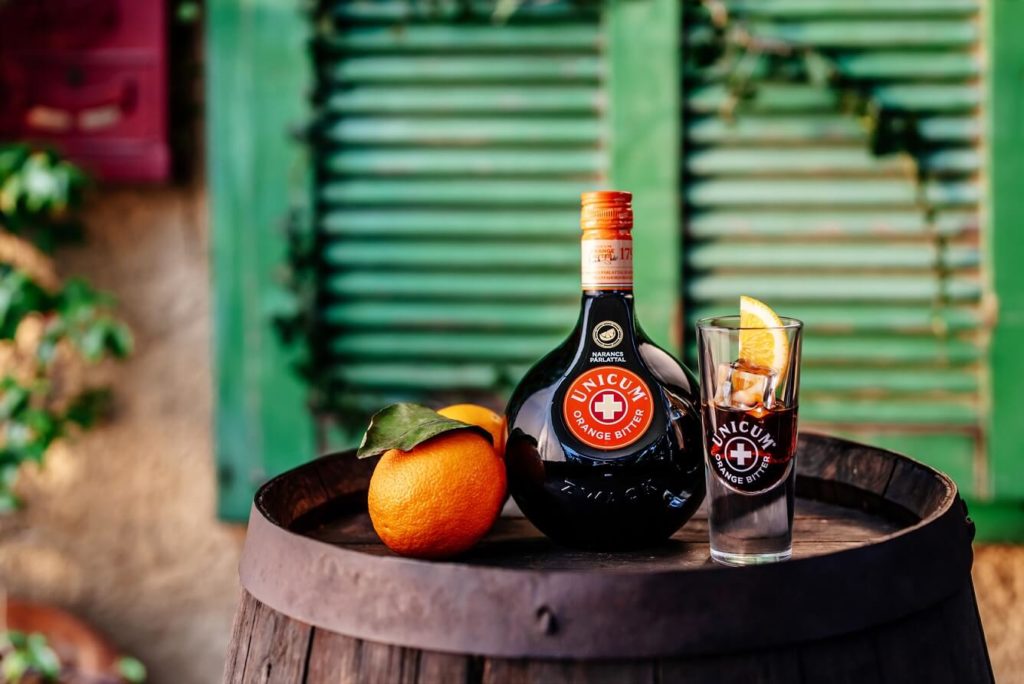
Unicum is another emblem of Hungarian spirits, a unique, dark-coloured, bittersweet herbal liqueur, often enjoyed as a digestif or aperitif. Produced by the Zwack family for over 200 years, its recipe is a closely guarded secret. Considered one of Hungary’s national drinks and also a “Hungarikum”, legend has it that it was created in 1790 for Emperor Joseph II, who upon tasting it exclaimed: “Das ist ein Unikum” (“This is unique!”). This rich history and uniqueness make it an essential drink to try in Budapest.
Production process:
It is a blend of more than 40 herbs and spices from all over the world, many of them originating in and around Hungary. Among its well-known ingredients are ginger, angelica root, lemongrass and orange peel. However, the exact recipe is a family secret, even kept in a safety deposit box in New York during the communist era. This secret formula, along with its blend of ingredients, gives it its unique, bitter and herbaceous taste.
Types:
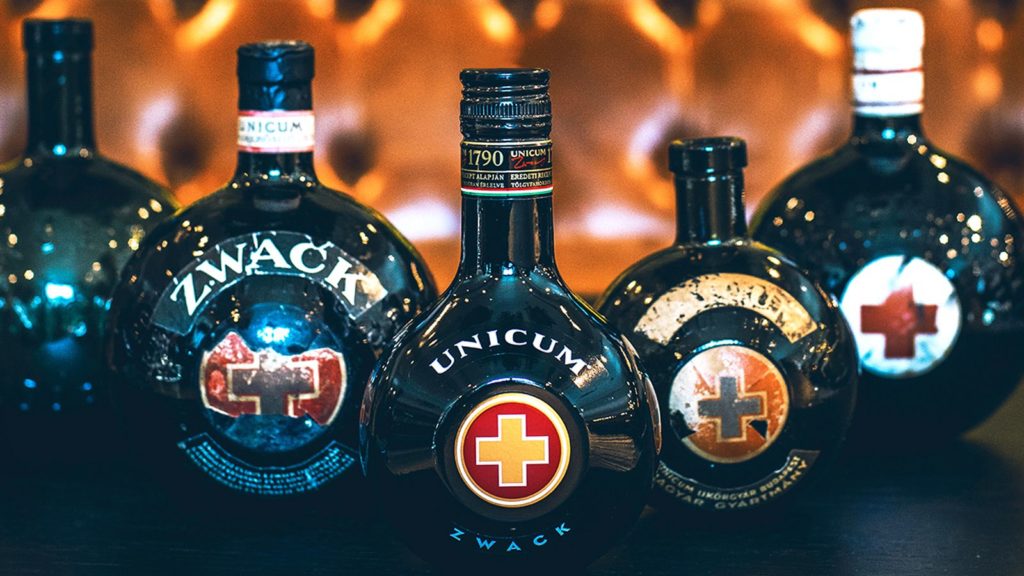
- Unicum Original: A thick, black, and viscous liquid with an intense herbal bitter taste.
- Unicum Next: A lighter, sweeter version with a noticeable citrus flavor (lemon and orange peel), designed to be more accessible.
- Unicum Szilva: The traditional Unicum, aged over dried plums, giving it a fruity and smooth sweetness.
- Unicum Riserva: A premium version aged in French cognac barrels, produced in very limited quantities for discerning palates.
- Unicum Barista: A unique variety offered at the House of Unicum, showcasing the brand’s ability to cater to different tastes while maintaining its essence.
History
Originally conceived as a stomach and digestive remedy, Unicum is considered by many Hungarians to be a real relief for stomach problems. Even the Habsburg royal family knew its secret. Its bitter taste can be interpreted as a metaphor for the difficulties the Hungarian people have faced throughout their history. This historical connection and its reputation as a remedy contribute to its cultural significance.
For more information check this article.
Recomendations:
Unicum is best served chilled in a shot glass or on the rocks. It can also be enjoyed neat, at room temperature, in a small stemmed glass. It is recommended to drink it slowly to appreciate its complex flavour profile. Traditionally, it is drunk as an aperitif to stimulate the appetite or as a digestive after a meal. This versatility makes it a suitable drink for different occasions.
Places to enjoy:
To immerse yourself in the Unicum legacy, a visit to the House of Unicum (Zwack Museum & Visitor Center) is a must. Located in District IX, near the Petőfi Bridge, it offers guided tours, film screenings about the family and the history of the brand, and tastings of different varieties of Unicum (Original, Plum, Riserva). Tours include the old distillery and the cellar, where hundreds of oak casks are housed. Premium tours offer the opportunity to sample more exclusive varieties such as the Unicum Barista. This experience allows visitors to get up close and personal with the history and production of this iconic spirit.
Egri Bikavér: The Legendary Bull’s Blood of Eger
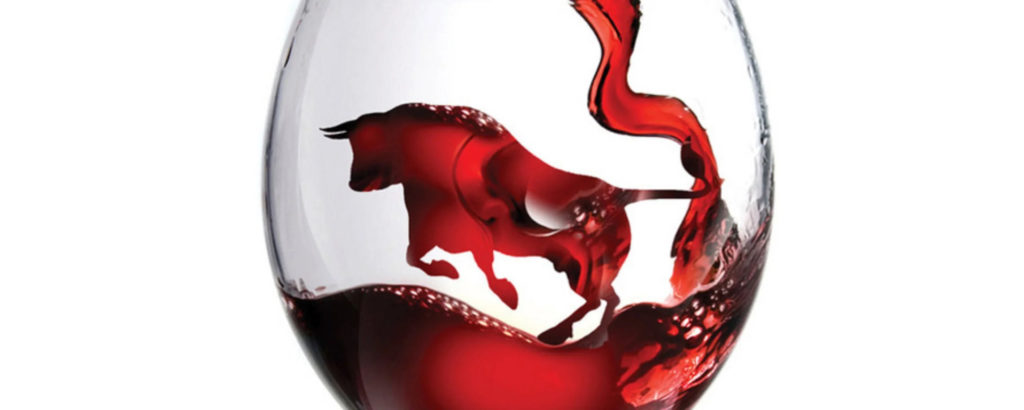
Egri Bikavér, whose name translates as ‘Bull’s Blood of Eger’, is one of Hungary’s most famous red wines, a dry red blend originating from the Eger region. The legend surrounding its name tells that, during the siege of Eger in 1552, Hungarian soldiers drank plenty of red wine, which was rumoured among the Turkish troops to be bull’s blood, giving them superhuman strength against the Ottoman army. Although historically inaccurate (red wine was not produced in the region at the time), the legend has endured, adding an aura of mystery and power to this wine.
Production process:
Egri Bikavér is a Hungarian red wine based mainly on the Kékfrankos variety. To be classified, it must contain at least three or four of the following grapes: Cabernet Franc, Cabernet Sauvignon, Merlot, Pinot Noir, Kadarka, among others. Their blend has changed over time, with Kadarka in the past and Bordeaux varieties more recently. There are different quality categories (Classicus, Superior and Grand Superior), each with specific requirements on composition, ageing and alcohol level, which guarantee their character and quality, always with Kékfrankos as the base grape.
History:
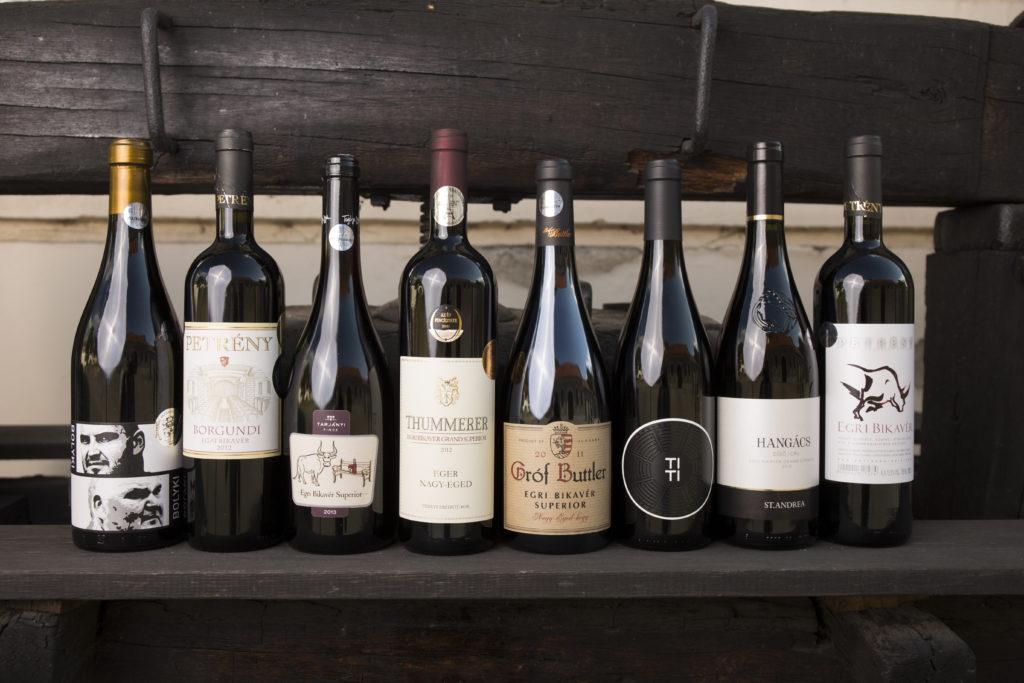
The production of Egri Bikavér dates back to the beginning of the 19th century and once made the Eger region famous. After a period of mass production during the communist era, producers are working hard to re-establish its high quality and reputation. The adoption of the Bikavér code has helped to define production standards. Eger also has a white wine known as the ‘little brother’ of the Bikavér, the Egri Csillag (Star of Eger), which is a white blend. The history of Egri Bikavér reflects the evolution and renaissance of the Hungarian wine industry.
To enjoy:
To enjoy Egri Bikavér in Budapest, you can visit wine bars and restaurants offering a good selection of Hungarian wines. Veritas is a wine bar specialising in Hungarian wines, and the Múzsa Bar also offers personalised wine tastings. Some well-established restaurants have high-end Tokaji wines on their menus. Another option is to take a day trip to the Eger wine region, located about 90 minutes from Budapest.
Egri Bikavér pairs perfectly with Hungarian stews, roast meats and soups. It is also an excellent choice to accompany dishes seasoned with paprika, pork stew or shepherd’s pie. It can be enjoyed on its own, appreciating its complexity. The Bull’s Blood Festival held in Eger (usually in July) is an important event for lovers of this wine. It is also served at weddings and other special occasions.
Tokaji: King of Wines and Wine of Kings
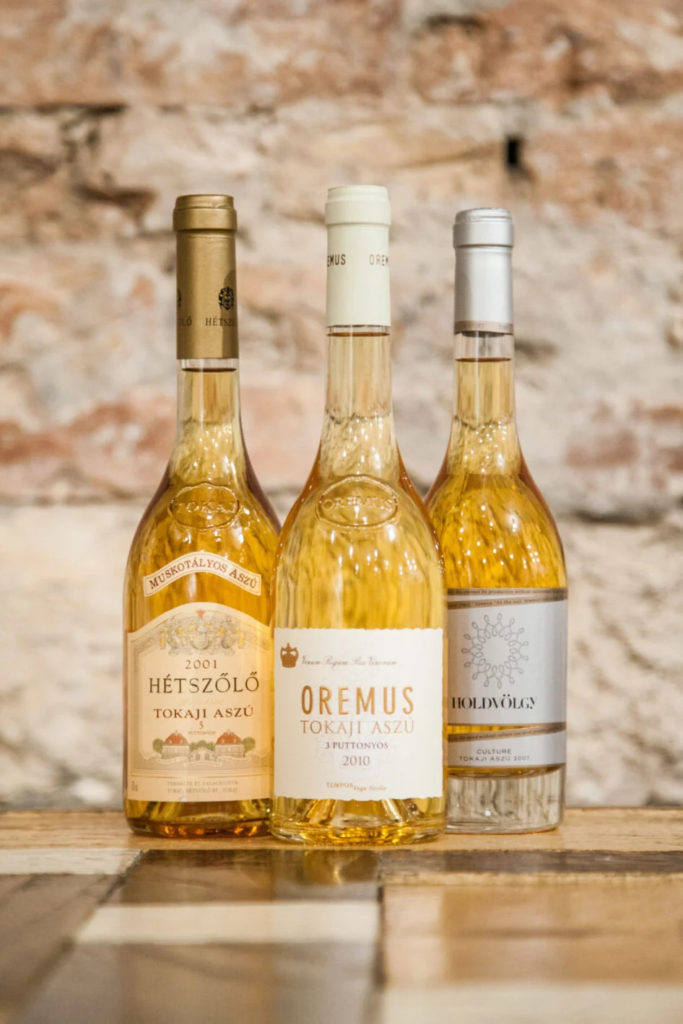
Tokaji is a legendary Hungarian wine from the Tokaj region, a UNESCO World Heritage Site. It is mainly known for its sweet white dessert wines, especially Tokaji Aszú. Historically, Louis XIV called it ‘the king of wines and the wine of kings’. It is considered the oldest botrytised wine in the world. Its historical prestige and its association with royalty make it a must taste for visitors seeking a sip of Hungarian tradition and luxury.
Production process:
The secret of Tokaji Aszú lies in its unique winemaking process, which involves grapes affected by noble rot (Botrytis cinerea). This fungus causes the grapes to become raisined on the vine, concentrating their sugars and flavours. The key grape varieties are Furmint (predominant), Hárslevelű and Sárga Muskotály. Aszú berries, hand-picked botrytised grapes, are macerated in a fermenting base wine or must. The climate of the region, with humid mornings and sunny afternoons, is ideal for the development of noble rot. The traditional method was to soak the Aszú berries in base wine for 24-48 hours, followed by fermentation and ageing in Hungarian oak barrels in cool, damp cellars. The modern approach often uses gentler maceration methods and less exposure to oxygen.
Types:
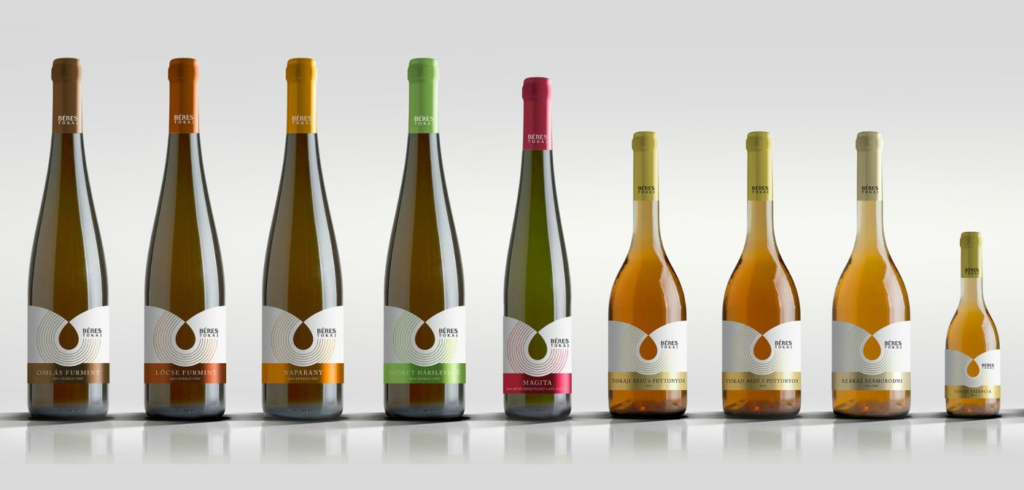
- Tokaji Aszú: A sweet wine historically measured by puttonyos (number of baskets of Aszú grapes added to a 136-liter barrel). The higher the number of puttonyos, the sweeter the wine (between 3 and 6). Now, sweetness is measured by residual sugar, with a minimum of 120 g/L for Aszú.
- Tokaji Szamorodni: Made with whole clusters of both botrytized and healthy grapes. It can be either sweet (édes, minimum 45 g/L residual sugar) or dry (száraz, maximum 9 g/L). Dry Szamorodni may have nutty, oxidative notes similar to sherry.
- Tokaji Late Harvest: Made with overripe grapes harvested late in the season (not necessarily botrytized). It is less complex than Szamorodni and is generally fresh and lively.
- Tokaji Dry Wines: Made primarily with Furmint and Hárslevelű, these wines are gaining popularity for their crisp acidity and mineral profiles, with notes of green apple, pear, and citrus.
- Tokaji Eszencia: The rarest and most concentrated Tokaji, made from the free-run juice of botrytized grapes. It has an extremely high residual sugar level (over 450 g/L) and low alcohol, often served with a spoon.
- Tokaji Pezsgő: A sparkling wine, mostly made from Furmint, that is crisp and refreshing.
Recomendations:
Tokaji Aszú is usually reserved for holidays and special occasions due to its higher price and noble status. It pairs excellently with foie gras, blue cheeses, Far Eastern cuisine and desserts. Eszencia is often enjoyed neat, sometimes served in special glass spoons. Dry Tokaji wines go well with seafood, grilled vegetables, light poultry, salads, creamy pastas and soft cheeses. Sparkling Tokaji (Pezsgő) is perfect for celebrations or as an aperitif, pairing well with light appetizers and fried foods.
Places to enjoy:
- Múzsa Bar: Offers personalized Tokaji tastings, providing a unique experience for wine enthusiasts.
- Address: Ráday utca 5, Budapest.
- Wine Bars: Various wine bars across Budapest offer a good selection of Hungarian Tokaji wines.
- High-End Restaurants: Some well-established restaurants in the city feature premium Tokaji wines on their menus, perfect for pairing with fine dishes.
- Specialized Wine Shops: Dedicated shops sell Tokaji and other Hungarian wines, ideal for taking home a taste of the region.
- Tokaj Region: For a more immersive experience, day trips to the Tokaj wine region (about 2 hours by train from Budapest) are available.
Fröccs: The Refreshing Hungarian Spritzer for Any Moment
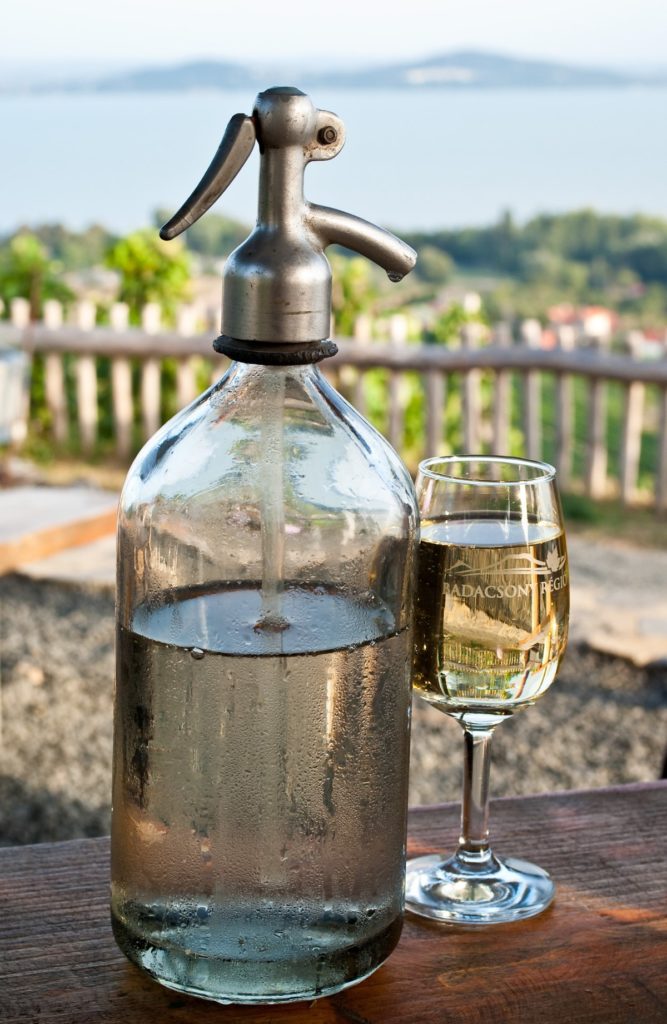
Fröccs is a very popular and refreshing summer drink in Hungary, a simple mixture of white (or rosé) wine and carbonated water (soda water, not mineral water). It is considered a Hungarian invention, a remedy for the hot summer months and an excellent alternative to beer. Its simplicity and freshness make it an accessible and enjoyable drink for visitors, especially during the warmer months.
History:
The invention of Fröccs is attributed to Ányos Jedlik in 1842, who also pioneered the industrial production of carbonated water. It was initially called ‘spritzer’ (German for sparkling water), but the poet Mihály Vörösmarty renamed it “fröccs” (Hungarian for ‘to splash’). The Hungarian name was aligned with the movement towards independence from Austria. Fröccs gained popularity during the communist regime due to the lower quality of the wine. Today, it is an integral drink of Hungarian social life, enjoyed in a variety of settings, from simple bars to elegant restaurants.
Types:
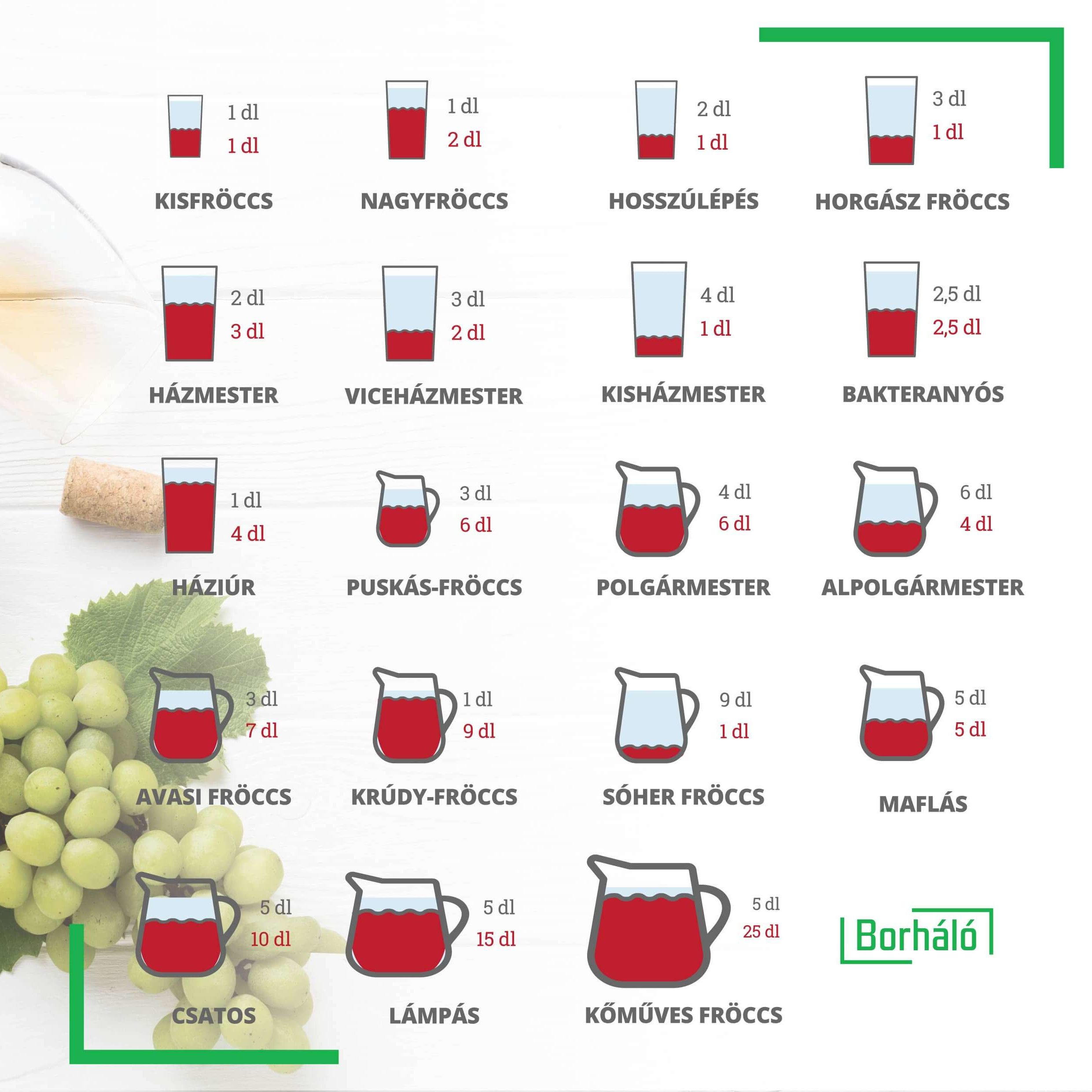
Fröccs is prepared in different proportions of wine and soda, each with its own name. Some of the most common versions include:
| Name of Fröccs | Wine Quantity | Soda Quantity |
|---|---|---|
| Small Spritzer (Kisfröccs) | 1 dl | 1 dl |
| Big Spritzer (Nagyfröccs) | 2 dl | 1 dl |
| Long Step (Hosszúlépés) | 1 dl | 2 dl |
| Vice Concierge (Viceházmester) | 2 dl | 3 dl |
| Sports Spritzer (Sportfröccs) | 1 dl | 4 dl |
| Landlord (Háziúr) | 4 dl | 1 dl |
| Janitor (Házmester) | 3 dl | 2 dl |
| Mayor (Polgármester) | 6 dl | 4 dl |
| Krúdy Fröccs | 9 dl | 1 dl |
| Bear Fröccs (Macifröccs) | Variable | Variable |
| Puskás Fröccs | 6 dl | 3 dl |
To enjoy:
Fröccs can be found in virtually any establishment, from ordinary pubs to ruin bars and restaurants in Budapest. Fröccsterasz is a popular place with a large selection of Fröccs. Also recommended is the Garden Fröccs Bár in the Budapest Garden, as well as Kőleves Kert and Bar Pontoon.
Fröccs is incredibly light and refreshing in the heat, making it a perfect summer drink. Its versatility allows for different alcoholic strengths depending on the desired effect. It is enjoyed at summer festivals, cosy pubs and informal gatherings. It can be an excellent alternative to beer, and some even prefer it all year round.

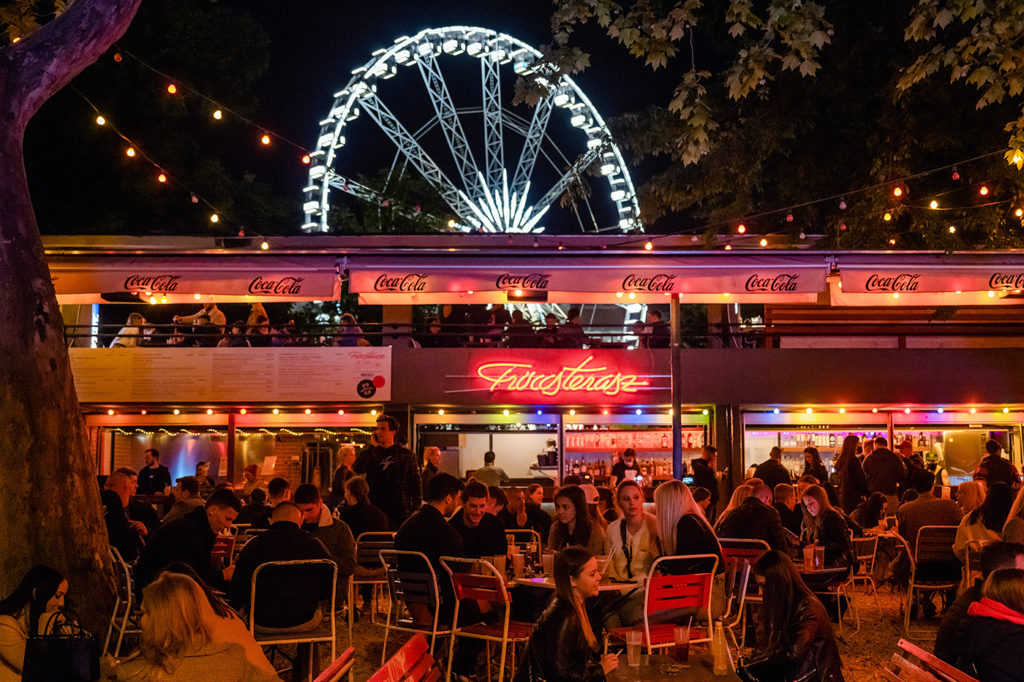
Comments are closed.